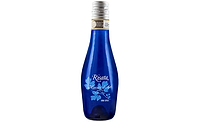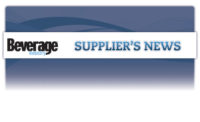Packaged design helps RTD cocktail’s success
The 1970 turns to TricorBraun for design assistance

In today’s competitive beverage market, packaging has become just as vital as the product inside the package. In its “Beverage Trends in Packaging and Processing Operations 2018” report, PMMI details the consumer trends that have influenced the packaging market.
“The premium and ultra-premium segments of just about every beverage category have experienced very strong growth in recent years,” the report states. “Mid-tier brands, particularly in the spirits industry, have been refreshing their packaging to present a more premium image through enhanced labels, more sophisticated closures, and eye-catching, shelf-ready packaging.”
However, SKU proliferation can make it challenging for new brands to differentiate themselves to consumers. As such, brand owners are turning to package design experts to support the packaging component of the new product development process.
“Packaging is very important to a new brand,” says Marco Serrano, design development manager for TricorBraun, St. Louis. “Smart packaging helps your product stand out in a crowded market, by helping brand owners stay one step ahead by meeting consumers’ needs and preferences, enhancing the consumer experience, helping to cut through noise at the shelf and differentiating the product, ultimately driving consumer loyalty.”
Last year, TricorBraun partnered with Ikeda Feingold, who had created a new ready-to-drink (RTD) vodka cocktail: The 1970.
Launched in spring 2017, The 1970 is based on Feingold’s family recipe dating back to 1970, which is made with 19 exotic fruits, spices and botanicals and is 70 proof, thus the name. Feingold also developed the new product to reach millennial consumers.
“Millennials didn’t really have a spirits product of their own,” Feingold said in a statement earlier this year. “I noticed they were romanticizing previous decades in their music and fashion choices and gravitating toward the 1970s in particular. Everything old was new again. At the same time, the 1970s was symbolic of my youth.”
After reaching out to numerous companies for packaging design assistance, the one that responded immediately to her request was TricorBraun. From there, Feingold and the packaging design team worked to take her design concept to reality.
“Ikeda wanted her product, a new concept in vodka-based spirits with a modifier, to stand out from brown liquors, typically packaged in short bottles,” Serrano says. “She wanted it to be thought of as a liqueur but didn’t want it to look like a liqueur bottle.”
To illustrate her vision, Feingold drew up her packaging concept on a napkin and shared it with Serrano. From there the packaging design expert and his team worked to make that vision a reality for the entrepreneur.
“After studying trends in high-end spirits designs, our team presented ideas, based on Ikeda’s original napkin sketch, [which] gave the bottle the sophisticated and elegant look she was striving for — and stood out from common themes in spirits designs,” Serrano says. “Ikeda’s vision included a tall, glass bottle with a mix of feminine and masculine design elements, including an offset neck, which is uncommon for a glass-bottled product.
“It was also important that The 1970 stand out from brown liquors, typically packaged in short bottles,” he continues. “Our team created a tapered design with an offset neck and broad shoulders that blended the reality of manufacturing with Ikeda’s vision.”
When designing any package, it is critical that the functional details have been accounted for, Serrano notes. The 1970 is no different in this regard.
“The 1970 project, for example, needed to account for a process of manual labeling, filling and capping, which allowed for certain design elements to be implemented,” Serrano says. “When more automation is involved in the production of filling and labeling, there are certain compromises that need to be made, which can drastically impact the overall aesthetic of the package. So the challenge really becomes getting the maximum brand impact out of the custom packaging while not losing sight of the functional requirement.”
However, when these aspects are taken into account, brand owners can reap the benefits. “The benefits are many, but in short, building a custom package allows you to mold your product around all of your commercialization and branding goals,” he says.
In the case of The 1970, those benefits already have been realized.
“There was no way I could have done this without TricorBraun,” Feingold said in a statement. “It was so important to me to get the bottle design right and TricorBraun was incredibly helpful, not only developing the final, engineered design but negotiating on my behalf to source all of the packaging elements: the glass bottle, the labels, hang tags, caps, boxes, cartons — everything. At the same time, they were generous in their guidance, taking me through the process step-by-step and making sure all of the design elements worked together.”
Exceeding sales expectations, The 1970 is available at on-premise outlets in Georgia; however, Feingold is looking to expand the brand to more states going forward. This early success and potential expansion has been credited to the RTD cocktail brand’s packaging design, she said. BI
Looking for a reprint of this article?
From high-res PDFs to custom plaques, order your copy today!







